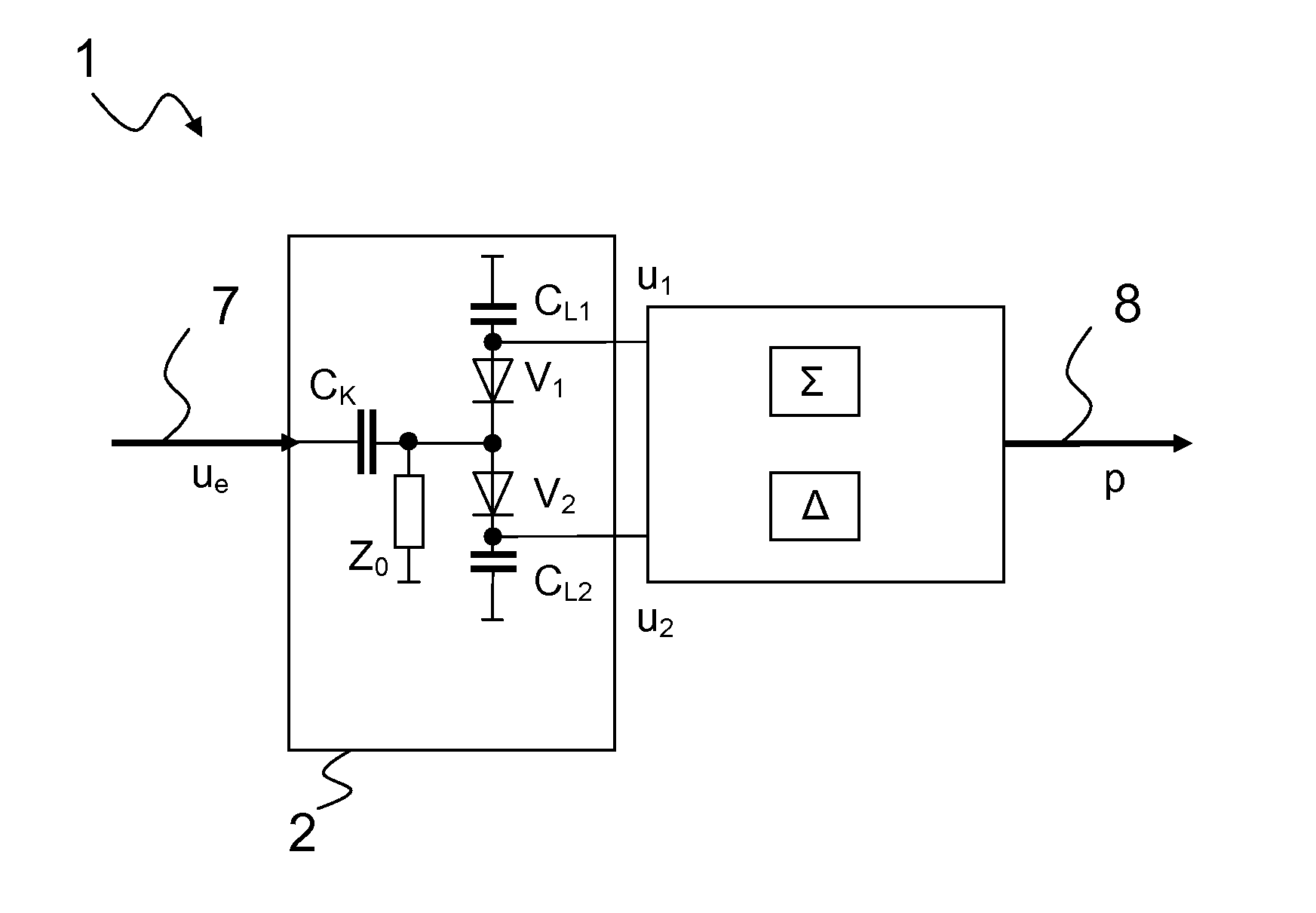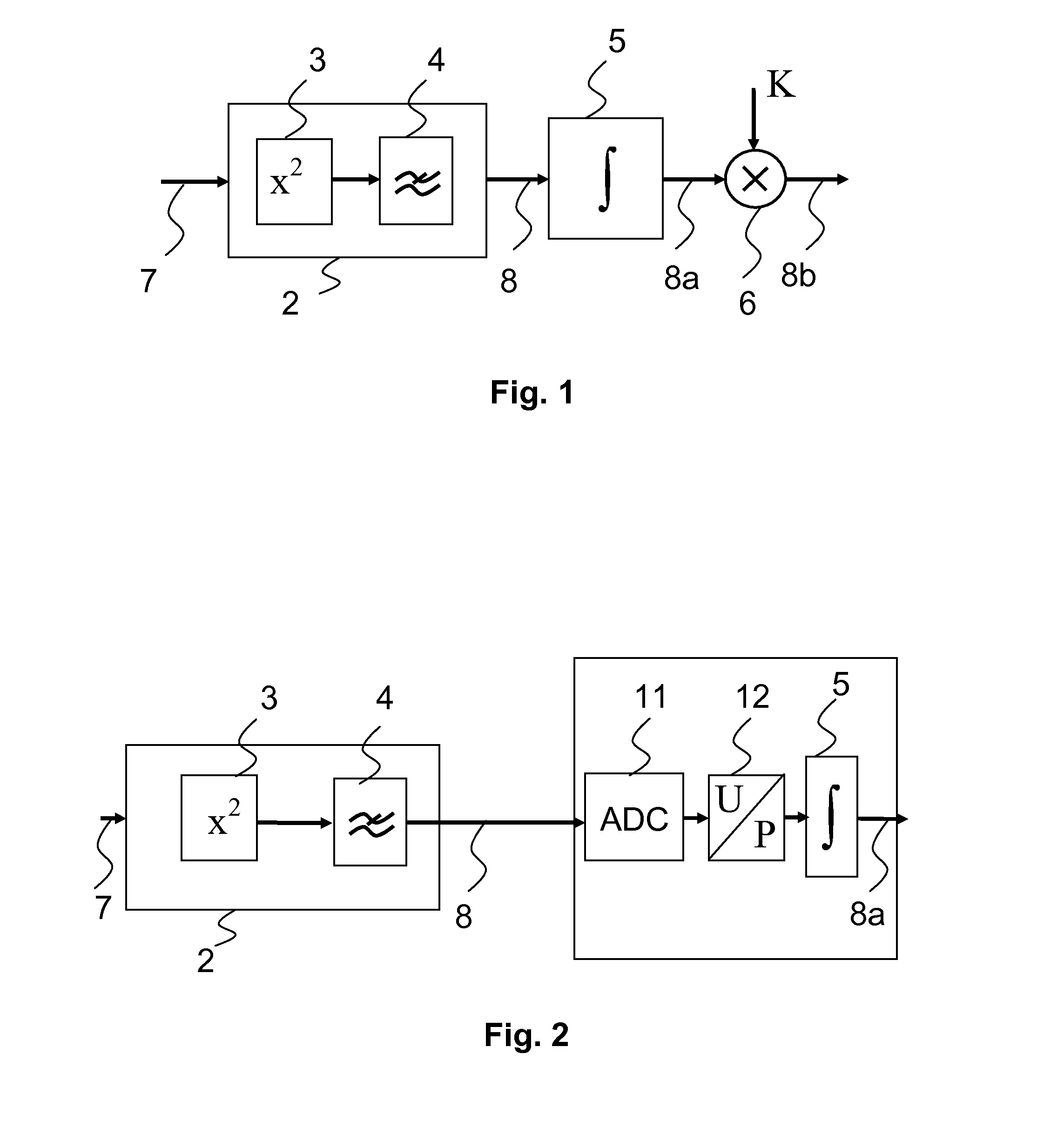Power meter with two detector elements for a power measurement even of extremely low frequencies
a technology of detector elements and power meters, which is applied in the direction of moving-iron instruments, instruments, electrical testing, etc., can solve the problems of inability to detect the electrical power of low-frequency signals, the inability to measure the time variation of envelope power, and the lengthening of measurement times
- Summary
- Abstract
- Description
- Claims
- Application Information
AI Technical Summary
Benefits of technology
Problems solved by technology
Method used
Image
Examples
Embodiment Construction
[0042]FIG. 1 shows a simplified functional circuit diagram of an ideal power sensor according to the current internal status in the applicant's laboratory. An ideal power meter absorbs and measures the power p supplied as a whole to a measurement input. The supplied power p is the power sum of all partial signals, that is, for example, the sum of the measurement signal 7, its harmonic and the superposed broadband noise, from all spectral lines of the input signal respectively.
[0043]The measurement signal 7 is generally an electrical voltage u or an electrical current i or—as is conventional in high-frequency technology and microwave technology —a wave. In the power meter 1, a power detector 2 is used to detect the supplied power p. All measurement principles for the detection of the electrical power p can be represented mathematically by a squaring 3 of the applied alternating signal 7. The output signal of the squaring unit 3 is a value proportional to the momentary electrical powe...
PUM
 Login to View More
Login to View More Abstract
Description
Claims
Application Information
 Login to View More
Login to View More - R&D
- Intellectual Property
- Life Sciences
- Materials
- Tech Scout
- Unparalleled Data Quality
- Higher Quality Content
- 60% Fewer Hallucinations
Browse by: Latest US Patents, China's latest patents, Technical Efficacy Thesaurus, Application Domain, Technology Topic, Popular Technical Reports.
© 2025 PatSnap. All rights reserved.Legal|Privacy policy|Modern Slavery Act Transparency Statement|Sitemap|About US| Contact US: help@patsnap.com



